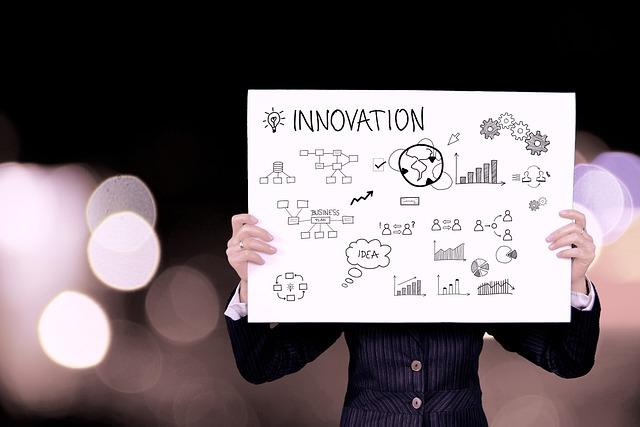In the heart of South Asia lies Pakistan, a nation brimming with potential yet facing undeniable challenges. As the country grapples with its multifaceted infrastructure needs, a pressing question arises: how can Pakistan navigate the crossroads of development and revitalization? From crumbling roads that hinder connectivity to outdated energy systems that stifle growth, the landscape is marked by both obstacles and immense opportunities. This article delves into the intricate tapestry of Pakistan’s infrastructural landscape, examining the pressing challenges that impede progress while illuminating the paths to innovative solutions. By exploring the intersection of vision, investment, and community engagement, we uncover the prospects that could not only reshape the physical environment but also invigorate the economic and social fabric of the nation. In this journey through infrastructure revitalization, we will explore strategies that harness local strengths and international partnerships, aiming to pave the way towards a more prosperous and sustainable future for Pakistan.
Revamping Urban Landscapes Through Sustainable Practices
Transforming urban landscapes requires a commitment to sustainable practices that prioritize environmental health while enhancing the quality of life for citizens. In Pakistan, integrating green infrastructure strategies can significantly mitigate the impacts of urbanization. Approaches such as the introduction of micro-parks, reimagining public spaces, and the planting of urban forests not only beautify the environment but also promote biodiversity and combat climate change. These innovations serve a dual purpose: they provide essential ecosystem services and create a connection between communities and their natural surroundings.
To implement these sustainable practices effectively, several fundamental shifts are necessary within urban planning and development frameworks. Key steps include:
- Community Engagement: Involving local residents in the decision-making processes to ensure that revitalization efforts reflect their needs and aspirations.
- Public-Private Partnerships: Collaborating with private entities to invest in green projects that benefit both parties and the community at large.
- Policy Incentives: Establishing incentives for developers to adopt eco-friendly construction techniques and materials that reduce the carbon footprint.
To illustrate the potential impact of these strategies, the following table summarizes key benefits of sustainable urban revamping:
| Benefits | Details |
|---|---|
| Improved Air Quality | Reduction in pollution through green spaces and trees. |
| Enhanced Community Cohesion | Public spaces foster social interaction and community-building. |
| Economic Growth | Attraction of tourism and new business opportunities in revitalized areas. |

Bridging the Gap in Rural Development and Connectivity
The disparity in development between urban and rural areas in Pakistan has long been a concern for policymakers and communities alike. However, by investing in critical infrastructure and leveraging technology, we can create sustainable pathways for rural empowerment. Enhancing connectivity in remote regions can foster economic growth and uplift the living standards by:
- Improving transportation networks that facilitate easy access to markets and services.
- Implementing renewable energy projects to provide reliable power in off-grid areas.
- Expanding digital infrastructure to promote education and e-commerce in underserved communities.
Furthermore, collaboration between government entities, private investors, and local communities can cultivate a comprehensive approach to rural development. Establishing public-private partnerships can ensure that infrastructure projects are tailored to local needs while maintaining sustainability. Key areas to focus on include:
| Focus Area | Outcome |
|---|---|
| Access to Clean Water | Improved health and hygiene |
| Educational Facilities | Enhanced literacy rates |
| Mobile Connectivity | Boosted local entrepreneurship |

Harnessing Technological Innovations for Efficient Infrastructure
In the quest to modernize Pakistan’s infrastructure, leveraging cutting-edge technological innovations is not just an option but a necessity. Digital tools such as Building Information Modeling (BIM) and Geographic Information Systems (GIS) are transforming the planning and execution phases of infrastructure projects. These technologies not only enhance precision and efficiency but also facilitate better collaboration among stakeholders, ensuring that projects are completed on time and within budget. Here are some of the key advantages of integrating technology into infrastructure development:
- Enhanced Project Management: Real-time data and analytics allow for effective monitoring and resource allocation.
- Cost Reduction: Improved forecasting techniques help in minimizing unexpected expenses.
- Environmental Impact Assessment: Advanced tools aid in assessing and mitigating ecological consequences.
Furthermore, adopting smart infrastructure solutions can pave the way for sustainable urban development. Implementing systems such as IoT (Internet of Things) sensors for smart traffic management and energy-efficient street lighting can significantly improve urban livability. Additionally, systems for real-time public transportation updates enhance commuter convenience and reduce congestion. A brief overview of current technological applications in Pakistan’s infrastructure sector illustrates the potential for transformation:
| Technology | Application | Benefits |
|---|---|---|
| GIS | Urban planning and land use | Improved land use analysis and mapping |
| BIM | Construction project management | Increased efficiency and reduced errors |
| IoT | Smart city solutions | Enhanced connectivity and sustainability |

Investment Strategies for Long-Term Growth and Resilience
To foster long-term growth and resilience within Pakistan’s infrastructure sector, investors need to embrace a strategy that prioritizes both sustainable development and risk management. Key components of this approach include:
- Public-Private Partnerships (PPPs): Engaging in collaborations that leverage public resources with private sector innovation can maximize infrastructure efficiency and funding.
- Diversification: Spreading investments across multiple infrastructure projects—such as transportation, energy, and water systems—can mitigate risks and enhance overall portfolio stability.
- Technological Integration: Incorporating advanced technologies such as smart systems and renewable energy solutions can lead to more resilient infrastructures that adapt to changing environmental conditions.
Moreover, investors should consider establishing a robust framework for monitoring and evaluation to ensure that projects align with broader economic goals. A potential table showcasing targeted investment areas can offer a clearer vision:
| Investment Area | Current Challenges | Potential Opportunities |
|---|---|---|
| Transportation | Poor infrastructure quality | Expansion of urban transit systems |
| Energy | Power shortages | Renewable energy investments |
| Water Management | Inefficient water distribution | Modern irrigation technologies |
Concluding Remarks
As we stand at the crossroads of potential and progress, revitalizing Pakistan’s infrastructure emerges not merely as a necessity but as a golden opportunity. The road ahead is laden with challenges, yet it is these very hurdles that can forge the path towards sustainable growth and prosperity. By harnessing innovative solutions, fostering public-private partnerships, and investing in human capital, Pakistan can transform its landscape into one that not only meets the needs of today but also anticipates the demands of tomorrow.
In this pivotal journey, collaboration emerges as the cornerstone of success — a concerted effort between government, industry, and communities can catalyze change that resonates beyond bricks and mortar. As our nation seeks to enhance connectivity, boost economic resilience, and uplift the quality of life for millions, the commitment to infrastructure development becomes a shared vision, illuminating the way for future generations.
In the words of the poet, “The best way to predict the future is to create it.” With strategic foresight and collective determination, Pakistan stands on the brink of a transformative era. Let us embrace this moment, confront the challenges head-on, and seize the opportunities that await, ensuring that our infrastructure not only supports our growth but also reflects the aspirations of a vibrant and dynamic nation. The journey is just beginning — and with every step, we build not just a foundation for today but a legacy for tomorrow.



